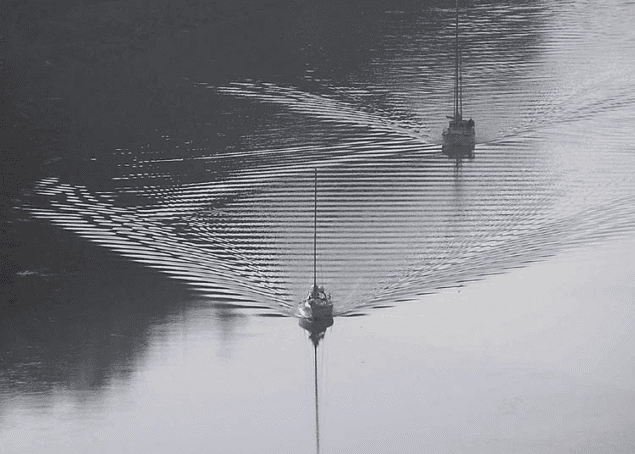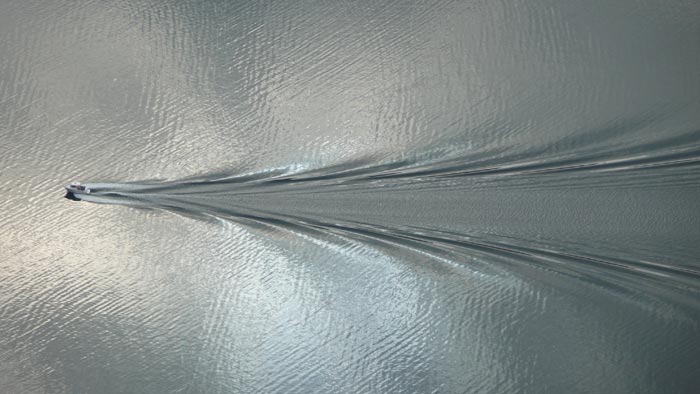
Unwanted roughness on cleaved silicon surfaces is created by an acoustic effect that is similar to the “Kelvin wake” that forms behind a slow-moving boat. That is the conclusion of researchers in France, who have studied how a propagating crack in silicon interacts with the sound it emits. The discovery could lead to new ways of controlling the fracture process in materials.
Physicists already know that crack propagation is affected by sound because several studies have shown that the progression of a crack through a material can be altered by the application of sound waves. It is also well-known that cracks produce sound as they move through materials, but exactly how a propagating crack is affected by the sound it emits is not well understood.
Now, Francois Rieutord and colleagues at the University of Grenoble Alpes and SOITEC have shown that the interaction creates periodic patterns on surfaces that were made by a silicon-processing technology called Smart Cut – which is used to create silicon-on-insulator electronic devices.
Bubble plane
Smart Cut is used to create a thin surface layer of silicon that is electrically isolated from a larger silicon wafer by a thin insulating layer. This involves implanting hydrogen atoms in the silicon at a specific depth above the insulating layer. This creates a plane of “bubbles” in the silicon, which make it more susceptible to fracture. A crack is initiated at one end of the wafer, and it propagates along the bubble plane. This cleaves the wafer, leaving behind a thin layer of silicon.
One shortcoming of the process is that the exposed silicon surface can have an unwanted alternating pattern of smooth and rough regions. This pattern is much more pronounced towards the opposite end of the wafer from where the crack begins.
To study the cracking process, the team attached piezoelectric transducers along the length of a silicon wafer to capture the sound emitted by a propagating crack. Laser light was also used to monitor the progression of the crack through the wafer. This revealed that the crack moved at a speed of about 2.5 km/s.
Reflected waves
The study showed that the crack created flexural sound waves, which cause the wafer to bend back and forth. These waves move with a group velocity that is about twice the speed of the crack itself. When they reach the far end of the wafer, they reflect and collide with the crack.

Physicists rethink celebrated Kelvin wake pattern for ships
Some of these waves have a phase velocity that is the same as the propagation speed of the crack. This results in a structure of flexural waves in the wafer that resembles a Kelvin wake of waves behind a slow-moving boat (see figure).
As the crack propagates from bubble to bubble, it makes microscopic deviations from a straight-line trajectory. Rieutord and colleagues argue that the size of these deviations, and therefore the roughness of the surface, is affected by the degree to which the silicon is deformed by the flexural waves. As the crack passes through the flexural wave structure, it encounters regions of high and low deformation that repeat at half the wavelength of the flexural waves – and this results in the observed regions of high and low roughness. By comparing the wavelength of the flexural waves to the separation between successive rough regions, the team confirmed this explanation.
The research is described in Physical Review Letters.



